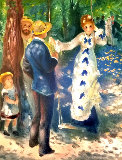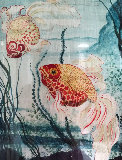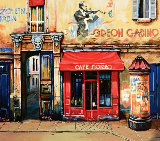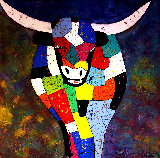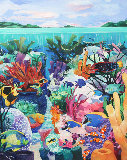





From Noa Noa: Te Atua HC 1999 - Tahiti
Paul Gauguin
Limited Edition Print : Woodcut on Japon in Canvas Portfolio
Size : 19.5x13 in | 50x33 cm
Framed : 38x32 in | 97x81 cm
Edition : From the Edition of 100
New Reduced
- 🔥🔥🔥1899 Limited Edition HC Woodcut - Blue Chip - Inquire - a Real Steal $1,800
Year1899
Plate SignedInitialed in the Bloch
Condition Other - very small nick to frame
Framed with PlexiglassSoft Gold Frame w/ Black Mats and Gold Filet
Purchased fromAuction House 1998
Story / Additional InfoPurchased in Charlotte, NC at an auction. Framed in beautiful pewter color frame with detailed matting and edging. There is one mark (not peeling) in the right corner of the frame.
Certificate of AuthenticityThe Great Dane Collection
LID169350
Paul Gauguin - France
Art Brokerage: Paul Gauguin French Artist: Paul Gauguin was a financially successful stockbroker and self-taught amateur artist when he began collecting works by the impressionists in the 1870s. Inspired by their example, he took up the study of painting under Camille Pissarro. Pissarro and Edgar Degas arranged for him to show his early painting efforts in the fourth impressionist exhibition in 1879 (as well as the annual impressionist exhibitions held through 1882). In 1882, after a stock market crash and recession rendered him unemployed and broke, Gauguin decided to abandon the business world to pursue life as an artist full-time. In 1886, Gauguin went to Pont-Aven in Brittany, a rugged land of fervently religious people far from the urban sophistication of Paris. There he forged a new style. He was at the center of a group of avant-garde artists who dedicated themselves to synthétisme, ordering and simplifying sensory data to its fundamentals. Gauguin's greatest innovation was his use of color, which he employed not for its ability to mimic nature but for its emotive qualities. Over the next several years he traveled often between Paris and Brittany, spending time also in Panama and Martinique. In 1891 his rejection of European urban values led him to Tahiti, where he expected to find an unspoiled culture, exotic and sensual. Instead, he was confronted with a world already transformed by western missionaries and colonial rule. In large measure, Gauguin had to invent the world he sought, not only in paintings but with woodcarvings, graphics, and written works. Listings wanted.


















